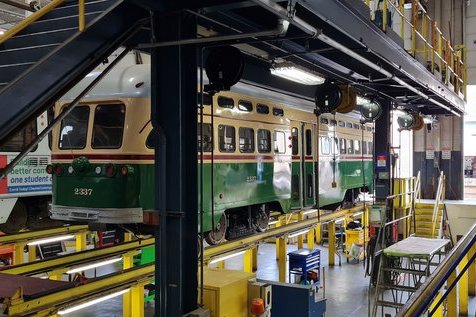
September 07, 2023
 Provided Image/SEPTA
Provided Image/SEPTA
SEPTA is delaying the return of it's classic green and cream-colored trolleys to provide operators more time for training. The cars are expected at some point this fall, spokesperson Andrew Busch says.
SEPTA had planned to roll out its refurbished classic trolleys this Sunday, but their return has been pushed back until later this fall.
"There is going to be a slight delay with the trolleys returning to service, mainly to allow time for more operators to get training on them," SEPTA spokesperson Andrew Busch said in an email. "We expect they will be in service this fall; we don't know the specific date yet."
The six trolleys, acquired in 1947, were pulled from tracks in January 2020 because most of them could not pass inspection. They have received new frames, sheet metal, flooring, windows, air conditioning systems and fresh green and cream paint. SEPTA Key Card scanners and plexiglass barriers that separate riders from trolley operators also have been installed.
The cost of the upgrades was about $250,000 per trolley.
The trolleys are used on SEPTA's Route 15, which mostly runs along Girard Avenue from 63rd Street in West Philadelphia to Westmoreland Street in Port Richmond. It is SEPTA's last solely surface trolley line.
Buses have been used on Route 15 while the trolleys have been refurbished.
In 1992, SEPTA also pulled the trolleys in favor of buses due to budget concerns, and they were not returned to service until 2005. The fleet also temporarily was replaced by buses due to construction in 2012.
Despite refurbishing the retro trolleys, SEPTA plans to replace them with a new fleet as part of its Trolley Modernization project. That calls for $1.8 billion in improvements to the nation's largest trolley network, including higher-capacity trolleys, station renovations, new platforms and handicap-accessible upgrades.
In February, the transit authority debuted renderings of the new trolleys, which each have 44 seats and space for 120 passengers. The trolleys will have designated areas for riders with disabilities and people bringing strollers or bicycles. They also will have audio and visual messaging systems that announce upcoming stops and service changes.
Alstom Transportation is building 130 trolleys at a cost of $718 million. The first trolleys are expected in 2027, with the entire fleet in service by 2030.